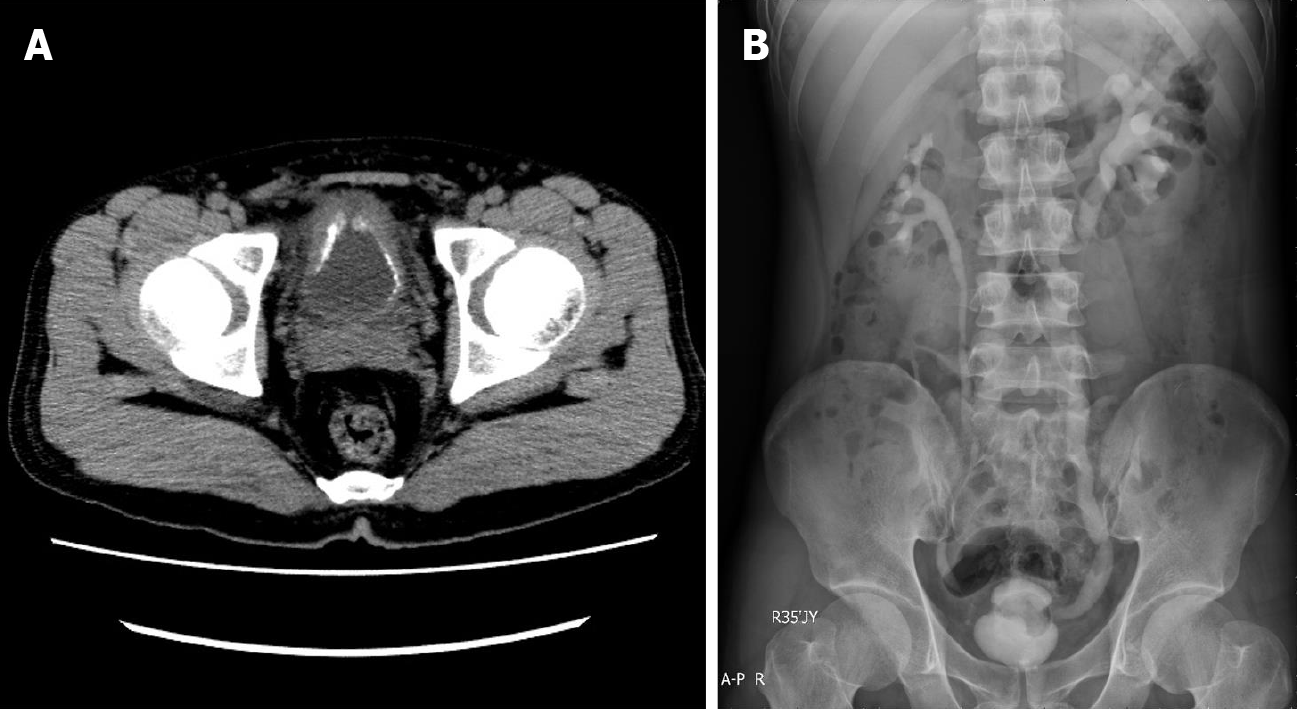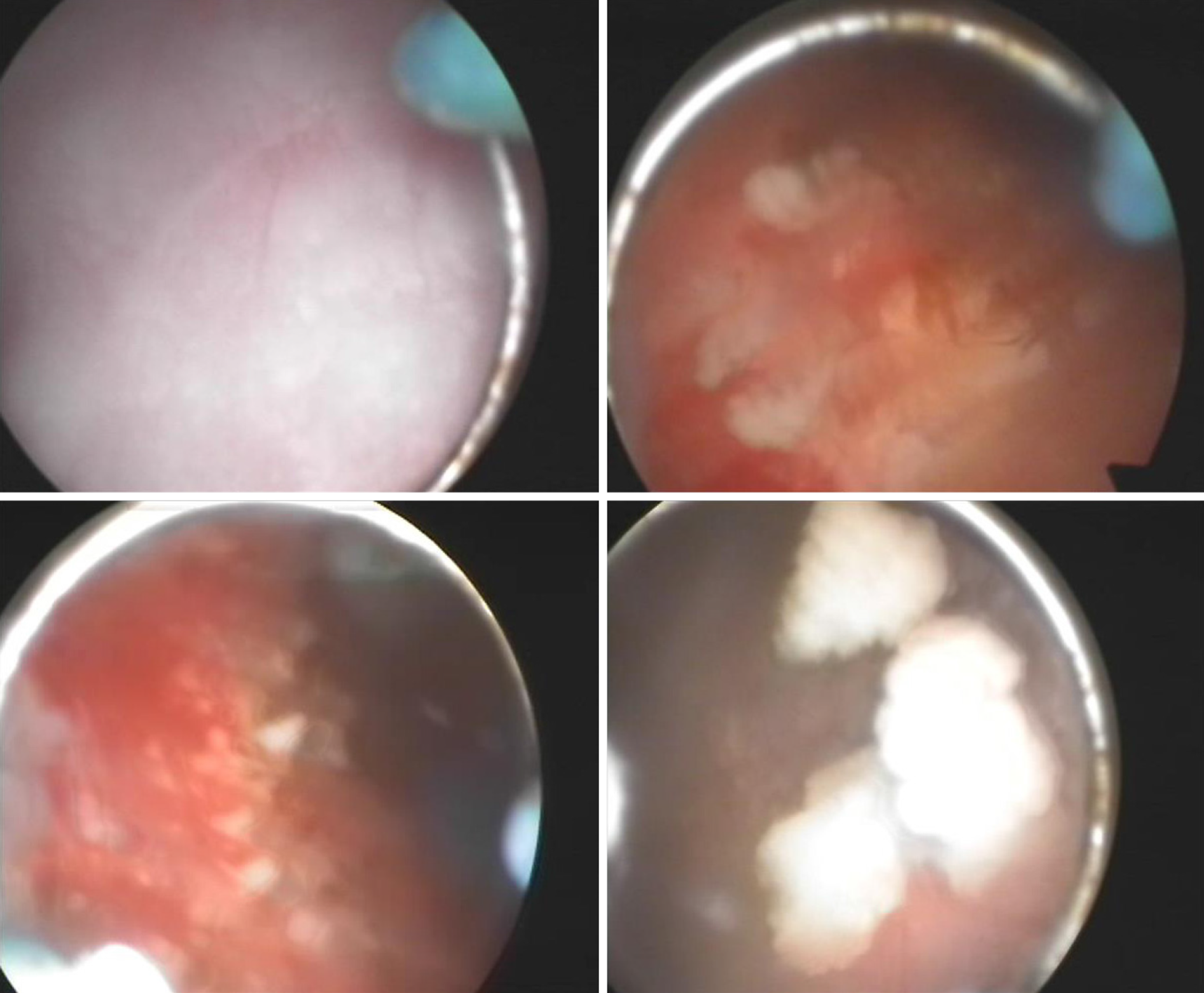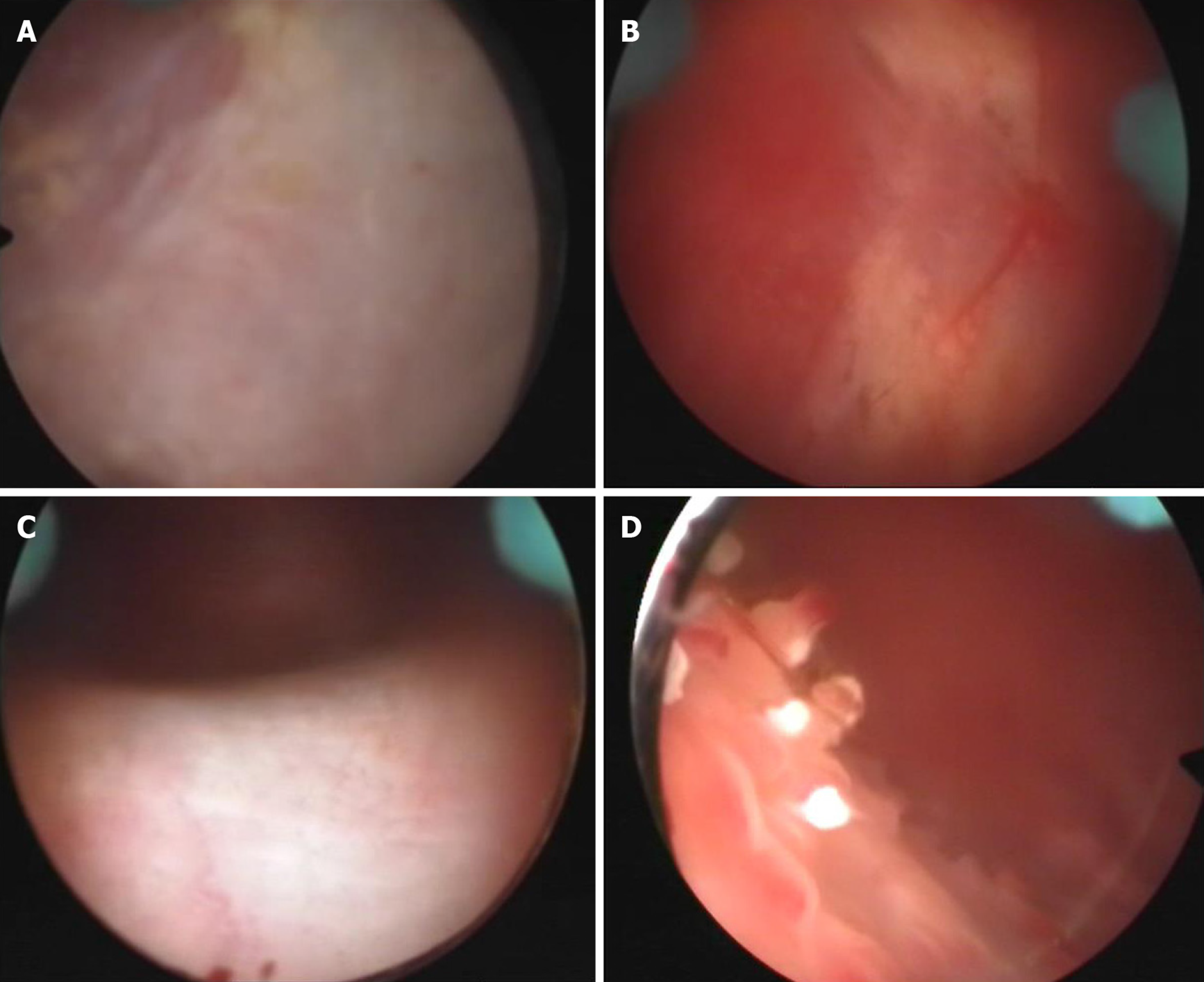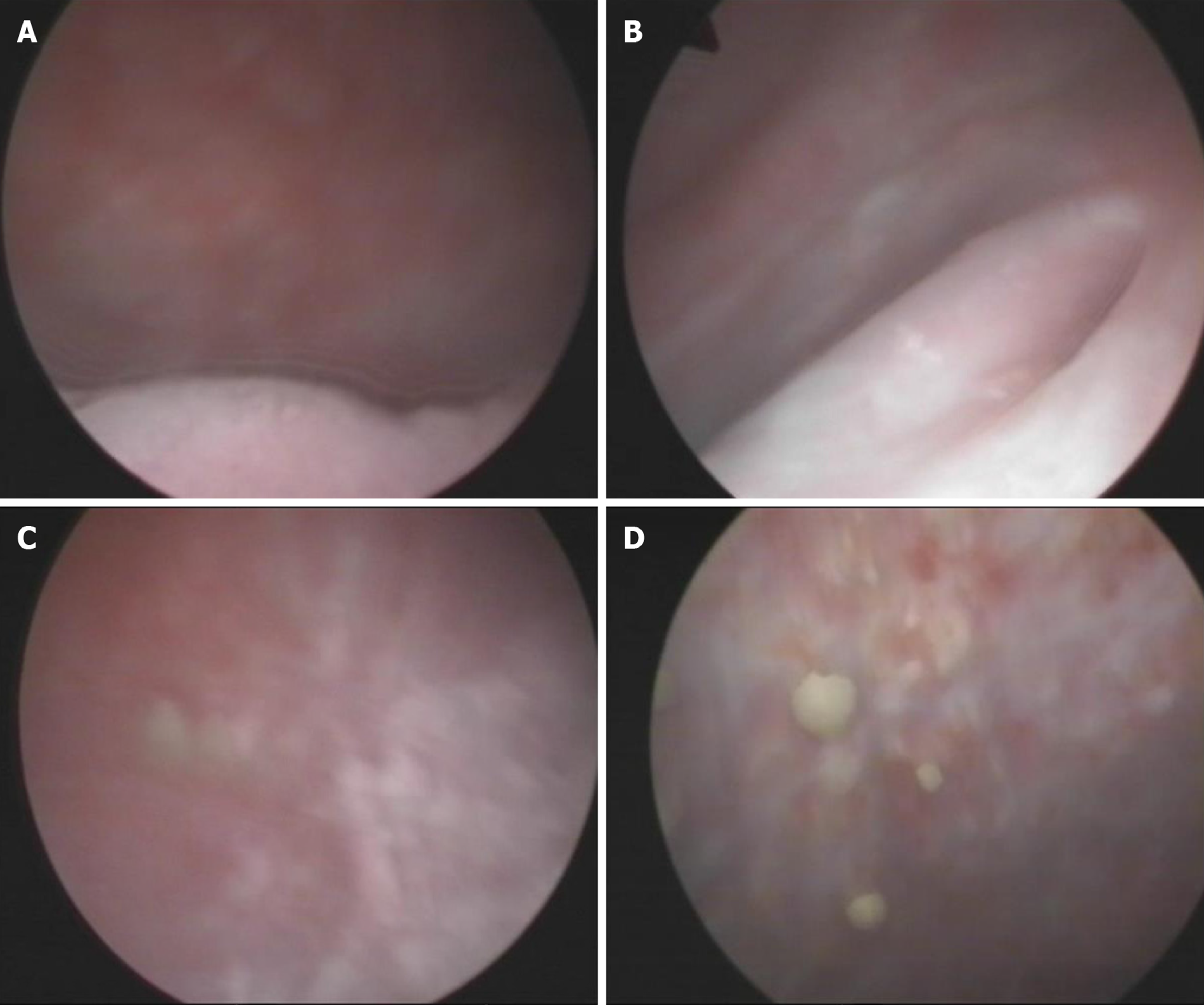Copyright
©The Author(s) 2020.
World J Clin Cases. Sep 26, 2020; 8(18): 4234-4244
Published online Sep 26, 2020. doi: 10.12998/wjcc.v8.i18.4234
Published online Sep 26, 2020. doi: 10.12998/wjcc.v8.i18.4234
Figure 1 Ultrasonography.
A: Ultrasonography on day 22 after onset of encrusted cystitis showed that the bladder wall was thickened and rough with multiple strong echogenic spots attached to it; B: Ultrasonography on day 60 after onset of encrusted cystitis showed that the bladder wall was thickened (thickest part-9 mm) and rough with multiple strong echogenic spots attached to the wall; C: Ultrasonography on February 8, 2012 showed smooth bladder wall with no hyperechogenic material on it.
Figure 2 Histopathological examination.
A and B: Hematoxylin and eosin staining on day 22 after onset of encrusted cystitis showed inflammatory granulation tissue on the bladder wall with local necrosis and calcification (100 × and 200 ×, respectively); C and D: Hematoxylin and eosin staining on day 45 after onset of encrusted cystitis showed chronic inflammation and epithelial hyperplasia of bladder mucosa. Calcium deposition, proliferation of fibrous tissue, and infiltration of neutrophils, eosinophils and lymphocytes were observed in the lamina propria of the bladder mucosa (100 × and 200 ×, respectively); E and F: Hematoxylin and eosin staining on day 60 after onset of encrusted cystitis showed that the bladder mucosa was edematous and necrotic with many encrusted crystals and a polymorphonuclear infiltrate forming a thick conglomerate (100 × and 200 ×, respectively).
Figure 3 Radiology findings.
A: Computed tomography performed on day 60 after onset of encrusted cystitis showed that the bladder wall had extensive thickening and many calcifications attached to it; B: Intravenous pyelography performed on day 60 after onset of encrusted cystitis showed that the bladder was gourd-like with a rough margin, and hydronephrosis was found in the left upper urinary tract.
Figure 4 Cystoscopy performed on October 8, 2010 showed a marked inflammatory appearance of all parts of the bladder mucosa with ulcerations and whitish plaques corresponding to multiple encrusted calcifications.
Figure 5 Cystoscopy performed on November 10, 2010 showed that the top and bilateral bladder wall mucosa still had hyperemia, edema, ulceration and multiple encrusted calcifications.
Figure 6 Cystoscopy performed on December 8, 2010 showed that the ulcers on the top and bilateral bladder wall were cured, but there were still a few encrusted calcifications on the mucosa.
Figure 7 Cystoscopy performed on February 16, 2011 showed no mucosal ulcers, but there were still a few mucosal encrustations on the top and bilateral bladder wall.
- Citation: Fu JG, Xie KJ. Successful treatment of encrusted cystitis: A case report and review of literature. World J Clin Cases 2020; 8(18): 4234-4244
- URL: https://www.wjgnet.com/2307-8960/full/v8/i18/4234.htm
- DOI: https://dx.doi.org/10.12998/wjcc.v8.i18.4234















